Abbey Grange CofE High School
This is a true story. The events depicted in this book occurred in Yorkshire between 1970 and 1980 Out of respect for the survivors, the nicknames they earned in this period have been used. Out of respect for the dead, the remainder has been told exactly as I recollect it.
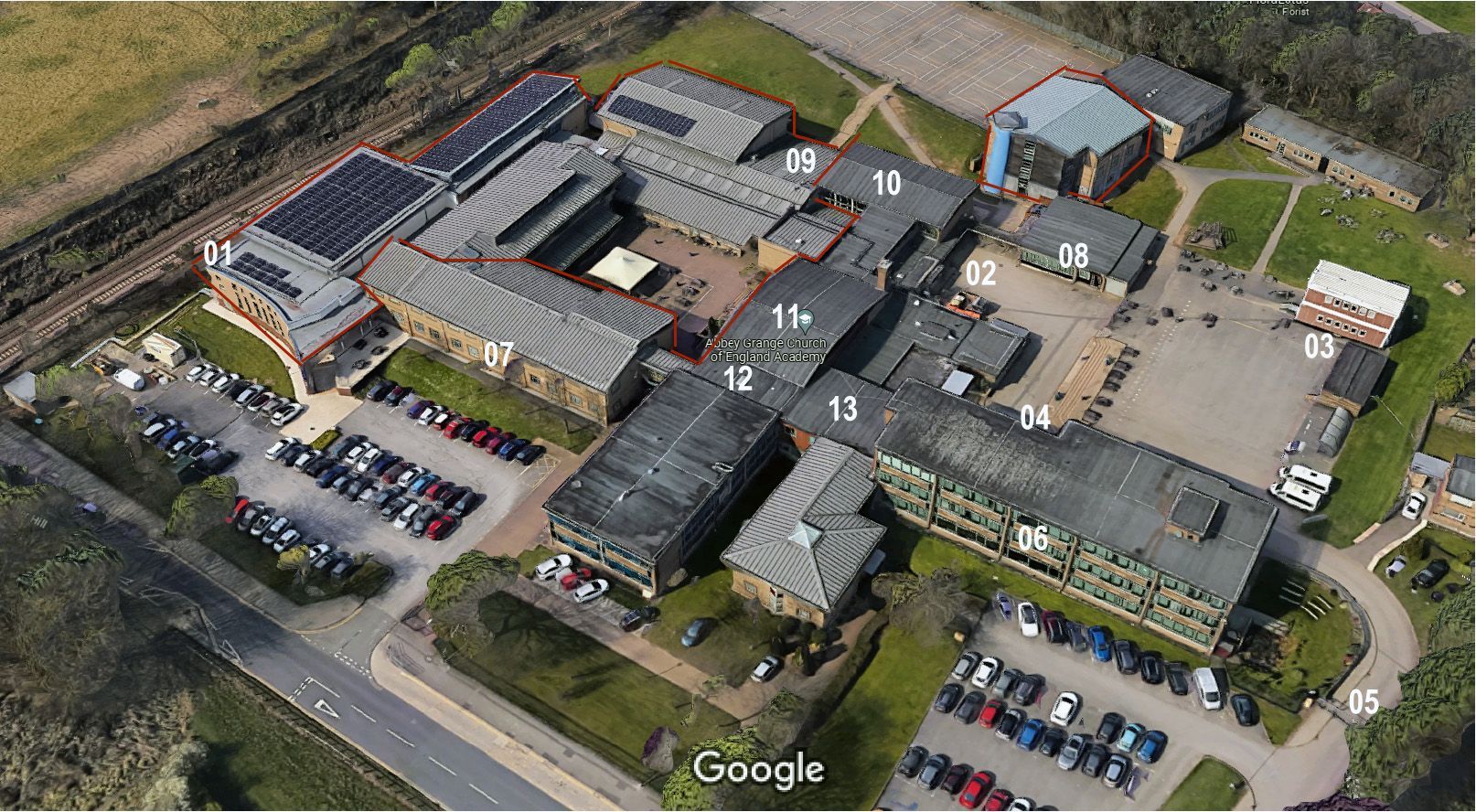
Imagery ©2023 Google, Imagery ©2023 Airbus, Infoterra Ltd & Bluesky, Maxar Technologies, The GeoInformation Group, Map data ©2023 10 m
I was the last generation to sit an eleven plus exam, my siblings all went through the middle school experiment between the ages of nine and thirteen. Following the exam I became a student at Abbey Grange CofE high school from 1970 until 1975, originally designed to accommodate a maximum of 500 pupils, was bursting at the seams with an intake year of 128 students, pushing the total student population to over 1,100. It was a stark contrast to my previous school, which had fewer than 100 students spread across just four classrooms. In that small and close-knit community, each subject was taught by the same teacher in the same classroom for an entire year. The new school, in comparison, was over 11 times its size, and that was just the beginning of the significant differences I would encounter.
The contrast between my previous school and Abbey Grange was not just in terms of size but also in the treatment I received as a student from a disadvantaged background. The early days at this new school were marked by a harsh reality, where bullies took pleasure in preying on our vulnerabilities. It was a painful introduction to the disparities that existed among the student body, a stark reminder that not everyone's journey through education would be fair or equitable.
In an effort to maintain a clear distinction between students who paid for their school dinners and those on free meals, the school implemented a double queue system. The paying students formed one line and were served their meals first, while the students receiving free meals had to wait. This segregation ensured that even those who had not noticed the poor free school uniform were aware of our status.
Unfortunately, this division between the two queues often led to unpleasant encounters. As the paying students sat at their tables enjoying their meals, some would take advantage of the situation and engage in disrespectful behaviour. They would taunt and belittle the students in the other queue, tossing chips their way and making derogatory remarks, insinuating that they were somehow inferior. These hurtful actions were accompanied by sarcastic comments like, "Here, poor boy, you need this more than me."
I have provided a tiny selection of images and teaser text from a few sections of the first part of my book, for the full story, please buy my book
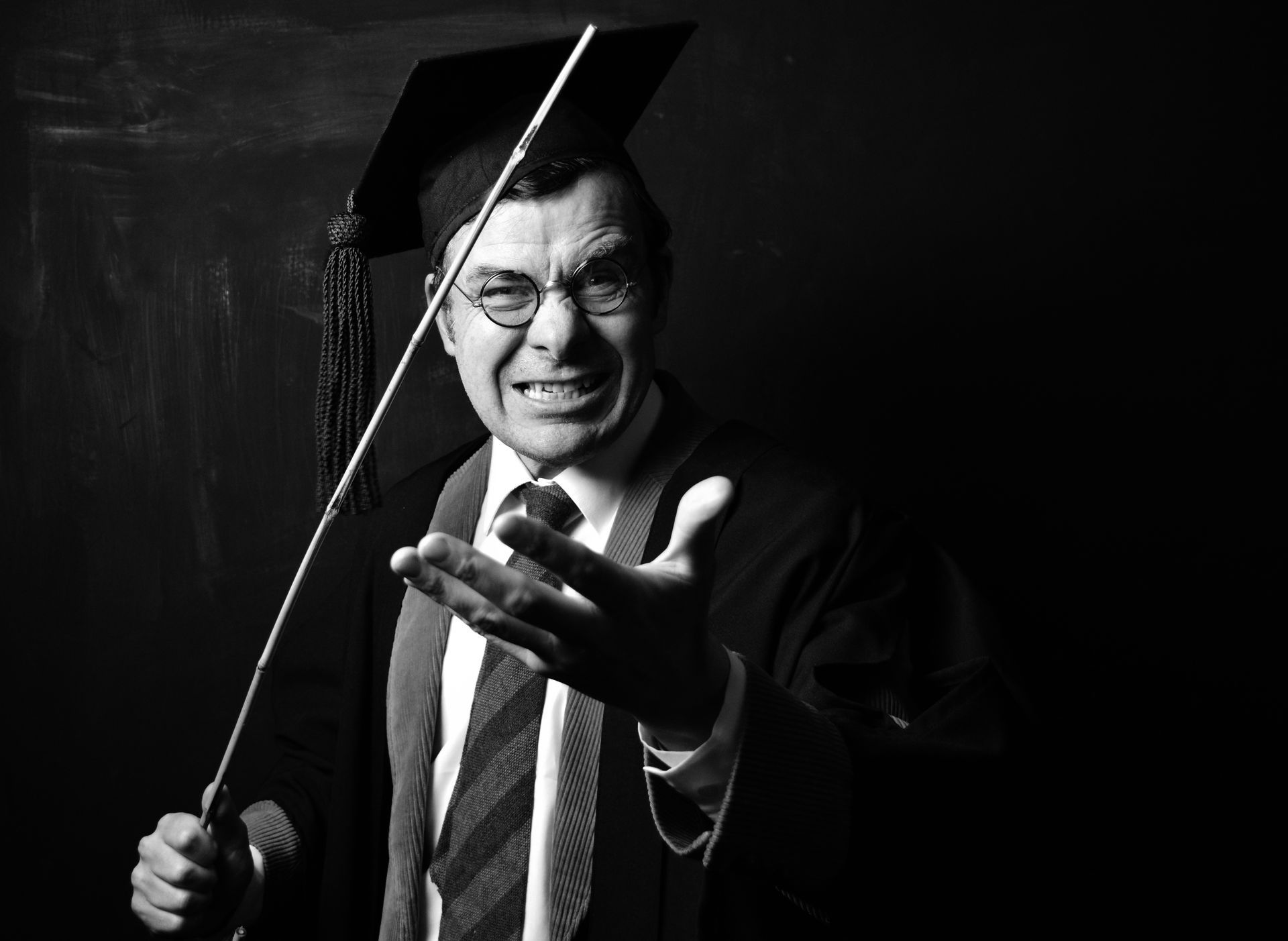
A Victorian approach to discipline
Mr. Slack, the headmaster, embodied the kind of leader who regarded teaching and schoolchildren as nothing more than an inconvenience. He actively sought to minimize his involvement with them, displaying a complete lack of familiarity with the names of any of the students in the school. This indifference extended to the teachers and staff as well.
The school's disciplinary approach harked back to the strict ways of the Victorian era. Every transgression committed by a student resulted in either capital punishment or the assignment of a punishment essay and sometimes both, the teacher would specify both the topic and the required number of pages. It was not uncommon to hear a teacher summon a pupil with a pointed finger, commanding them to write a four-page essay on the perils of running in school. The teacher would then deposit a slip detailing the punishment into the essay's designated box in the hallway.
The completed essay had to be dutifully submitted by 9:00 AM the following day. For every four essays assigned, the headmaster would administer two strokes of the cane upon the student's hand, a consequence seemingly fitting at first glance. However, some teachers took a vindictive approach when issuing these essays.
I, too, fell victim to the cane, for exceeding the allotted number of essays on three separate occasions. As an eleven-year-old, the experience of awaiting the headmaster's readiness to deliver this dreaded punishment was far from pleasant. The headmaster, a towering, athletic figure, cast an intimidating shadow. The aftermath of such chastisement left one unable to hold a pen, or even write, for a torturous period of approximately two hours.
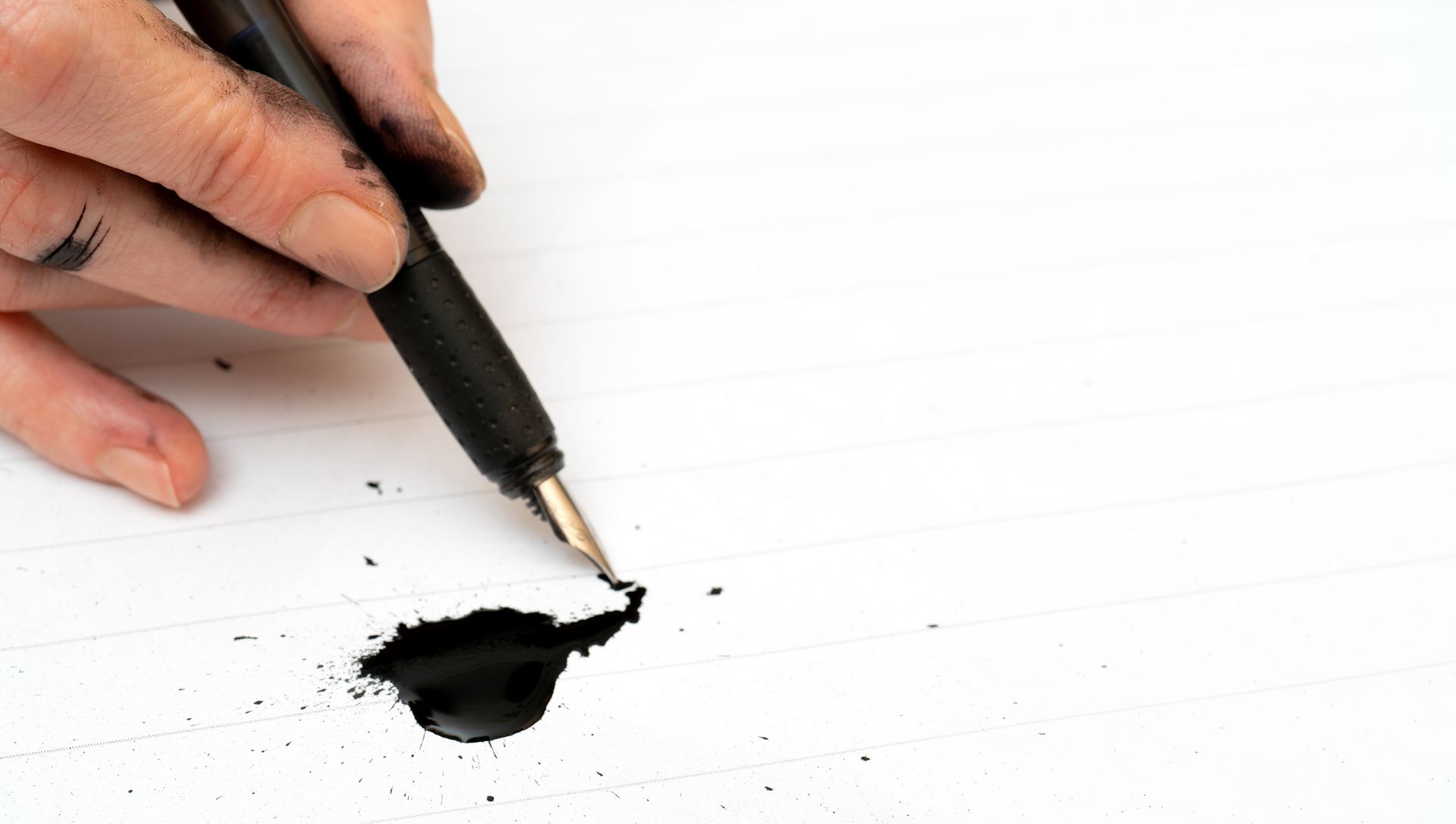
Fountain pens
At the outset of our first week at school, an unexpected rule was imposed upon us: a complete ban on ballpoint pens. The administration insisted that every student must use a fountain pen, and we were given until the following Monday to comply. No exceptions were to be made, even for those receiving free school uniforms and lunches. Thankfully, my grandfather came to my rescue, presenting me with a cherished fountain pen and a bottle of ink to meet this newly enforced requirement. Little did I know that this would mark the beginning of a series of tribulations.
Adjusting to writing with a fountain pen proved to be quite challenging. As I diligently crafted my words on paper, my right hand gradually took on a permanent blue hue due to constant contact with the ink. The pen had an unfortunate tendency to occasionally leak, leaving unsightly blotches and smears on my work. Moreover, the ink stains stubbornly clung to the cuffs of my pristine white nylon shirt, presenting quite the obstacle when it came to washing them out.
Adding to the frustrations of this new writing instrument were a group of mischievous individuals who saw fit to turn their fountain pens into impromptu ink-firing water pistols. Within the first two weeks of the term, I found myself twice falling victim to their pranks, drenched in ink and left to deal with the consequences. Removing the stubborn stains proved to be an arduous and often impossible task. Since replacing the uniform was not an option, I was left with no choice but to wear
the soiled and damaged clothes for another year, once again singling me out as different.
Amidst the usual classroom chatter one day, a mischievous pupil seized an opportunity for a prank. Swiftly snatching another student's pen from their grasp as they were in the midst of writing, the scene erupted into a brief commotion, with some pushing and shoving as the victim sought to reclaim their stolen pen. As the tensions escalated, a towering student emerged triumphant, clutching the pen at a considerable distance from the victim. In an unfortunate twist of fate, a teacher entered the room, catching the scene in its delicate equilibrium. Seizing the moment, the mischievous protagonist hurled the pen towards the victim, and with an unintended stroke of precision, the nib struck her forehead, leaving behind a conspicuous blue dot, a peculiar and unwanted tattoo. Understandably, the victim's expression conveyed a profound sense of displeasure and frustration.
The transition to using fountain pens came with unforeseen consequences. What was intended as a measure to encourage better penmanship instead became a source of daily challenges, leaving me with perpetually stained hands, ruined assignments, and a continuous battle against ink-related mishaps, including inadvertently marking a fellow student with an unwanted tattoo akin to a borstal mark.
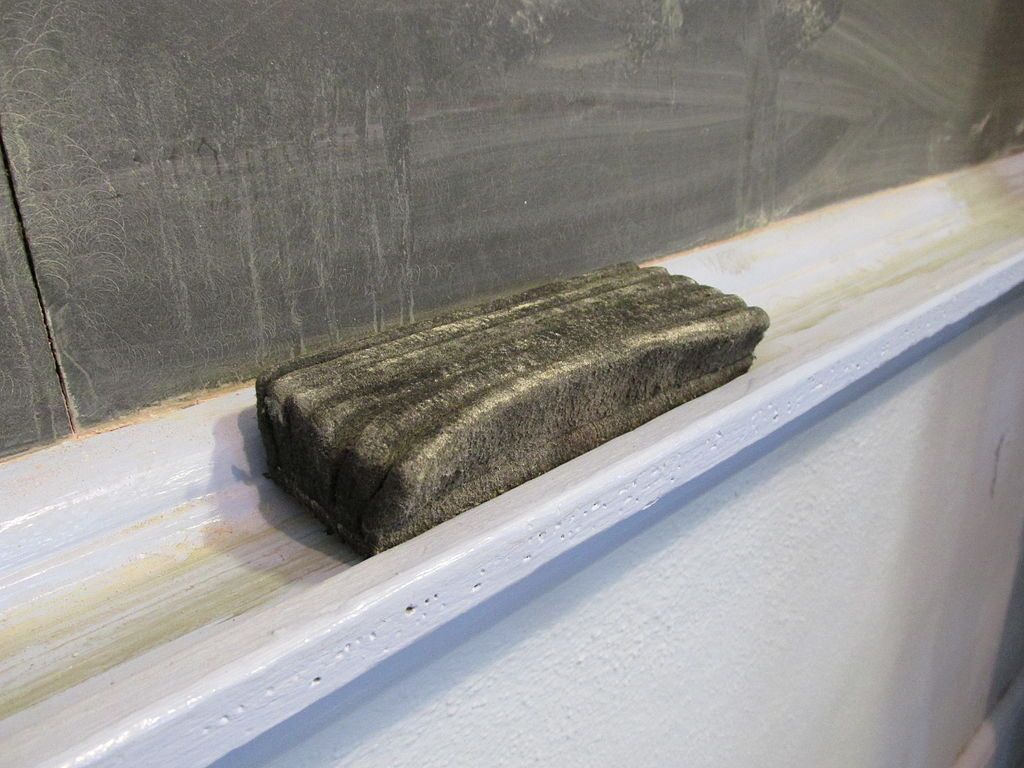
Image copyright Whacking Erasers https://bruceblumer.com/whacking-erasers/
Classroom distractions
It was an era where teachers resorted to various tactics to awaken sleepy or distracted pupils during class, sometimes sneaking up and hitting the pupil with a ruler, other times throwing the stick of chalk.
One such common practice involved launching the blackboard eraser with pinpoint accuracy, aiming to strike the desk or wall near the inattentive student. The impact of the eraser hitting its target was usually enough to startle them awake and re-engage with the lesson. However, there were instances when misfortune intervened. The eraser, propelled with unintended force, found its mark on the student's unsuspecting head, causing them to lose consciousness. It was a rare occurrence, but one that left an indelible impression on all who witnessed it. Today's students, living in an era of evolving educational methods and practices, can scarcely fathom the magnitude of such experiences that were once commonplace in classrooms.

School bullying out of control
One dreary afternoon during a wet dinner break. Without uttering a single word, a lad entered my form room, his eyes brimming with malice. In a swift and violent motion, he seized a chair and shattered it against my defenceless back. The agonizing pain coursed through my body, a haunting reminder of the depths of cruelty to which my fellow students would stoop. The relentless assailant found himself in the custody of the police and questioned for his assault against me.
That was not the end of the brutality I endured. On another occasion, Fuelled by an insidious darkness and a desire for revenge for the trouble I had caused him, he fostered a sinister desire for my demise. He orchestrated a horrifying plan, one that would unfold within the confines of the No. 72 public service bus that ferried me home from school.
With a grip tightened upon my hair, he callously dragged me towards the rear of the bus, opening the emergency exit door and propelling me through. Though the vehicle had slowed to a meagre 20 miles per hour, the design peculiarities of this particular bus model would thrust me into a perilous dance with fate. The emergency exit door, positioned on the opposite side of the entrance, swung open into
oncoming traffic. As I tumbled across the road, cars hurtled toward me, their drivers swerving and braking in desperate attempts to evade the impending catastrophe.
The gravity of the situation weighed heavily upon my mother's heart. Driven by an unwavering determination to protect me, she confronted the headmaster, Mr. Slack, seeking justice and solace. To ensure her voice resonated and to serve as an irrefutable witness, my grandfather, a BSc in Physics and revered head of the mathematics and physics departments at Roundhay School (retired), accompanied her to the meeting.
However, the scales of justice seemed tipped against me. Mr. Slack, far from an impartial arbiter, delved into my past with an ulterior motive. He unearthed every record of scuffles, bullying incidents, and any other misdemeanours, intent on weaving a narrative that painted me as the provocateur, a troublemaker instead of a victim. My grandfather, an astute observer of character, left that encounter with an indelible impression. In his esteemed opinion, Mr. Slack proved unworthy of the title of headmaster, a guardian of students' well-being.

The scientific era
With my newfound friends, the twins, Frodo and Bilbo, I experienced a significant turning point in my school life. They were part of a group of budding scientists and explorers, their minds constantly brimming with curiosity and a thirst for knowledge. It was through their influence that my own passion for science and exploration began to take flight.
Eager to keep pace with this intellectually stimulating group, I embarked on a personal quest to bridge the knowledge gap and immerse myself in their world of scientific discovery. I sought out various avenues that would provide me with the
tools and understanding necessary to explore the realms of science and electrical engineering alongside them.
One such avenue that became an invaluable resource was my subscription to Practical Wireless magazine. Every month, a copy of this magazine would arrive, bearing a treasure trove of information within its pages. From articles on circuitry and electronics to practical experiments and innovative projects, it became my go-to source for technical knowledge.
In the years that followed, Practical Wireless continued to be a guiding light on my scientific journey. It remained a constant source of inspiration, providing me with the guidance, ideas, and motivation to continue exploring and pushing the boundaries of my understanding. The magazine became a trusted companion, accompanying me through my academic pursuits and shaping my career path in the field of science and technology.
In the company of Frodo, Bilbo, and the rest of our like-minded group, the boundaries of our knowledge expanded. We engaged in discussions, exchanged ideas, and challenged one another to reach greater heights. As we delved deeper into the realm of electrical engineering and many other science subjects, we realised that the pursuit of knowledge was not merely an individual endeavour; it was a collaborative effort that propelled us forward.
Our collective enthusiasm and shared experiences fostered an environment of joint support. We revelled in the joys of unravelling complex circuits, tinkering with electronic devices, and witnessing the marvels that science had to offer. Our shared passion for exploration served as the cornerstone of our friendship, binding us together in a common purpose.
Through our collaborative endeavours, we not only honed our technical skills but also developed lifelong bonds. The moments spent exchanging components, discussing circuit designs, and witnessing the fruits of our labour forged memories that would forever remain part of us.

British Association of Young Scientists
My group of school friends had formed a habit of gathering during lunchtime and after school to engage in lively debates about the latest theories in physics, electronics, and other scientific topics.
Encouraged by their enthusiasm, I decided to join B.A.Y.S. (the British Association of Young Scientists), a club organised by Leeds University. The club held monthly meetings in one of the university's lecture theatres, where a scientist from the university would deliver a presentation on various subjects. Though some presentations went over our heads, they were intriguing enough to keep me attending for several years.
On one particular occasion, my sister Fiona expressed a desire to accompany me to a B.A.Y.S. meeting. While I suspected her interest lay more in being around my friends than in the scientific discussions, I agreed to let her come along. We arrived early, taking seats near the back of the lecture theatre, eagerly anticipating the start of the presentation. The topic of the day was volcanoes, and as the scientist began describing the different types of volcanic eruptions, an unexpected and embarrassing situation unfolded.
Fiona started experiencing flatulence, and the uncomfortable wooden bench seats amplified the sound, making it impossible to ignore. Coincidentally, her gas emissions seemed to align perfectly with the lecturer's descriptions of long, slow eruptions and fast, powerful eruptions. The audience couldn't help but notice, and although some found it amusing, the situation left me feeling mortified. After the meeting, my friends jokingly advised me never to bring Fiona along to future gatherings.
While the incident was undoubtedly embarrassing at the time, it became a memorable anecdote shared among my friends. It serves as a reminder that unexpected and humorous moments can arise even in serious settings, creating lasting memories and laughter in the process.

Screwdrivers in school
At school, a mischievous game had taken hold, involving the removal of screws from various objects around the premises. Fire door hinges, desks, chairs, and even window hinges were targeted, causing unexpected collapses and breakages. The school community became increasingly cautious, testing everything before trusting its stability.
Frodo and Bilbo, being identical twins and part of the group interested in electronics, often played along with the game. When a teacher would ask, "Are you
Frodo or Bilbo?", they would teasingly reply with, "Which one do you want?" and consistently present themselves as the other twin.
The headmaster was aware of these occurrences and knew in his mind that the twins were involved. He had received reports that one of them had been seen with a screwdriver, which further fuelled his suspicion.
In response, the twins were summoned to the headmaster's office for a serious interrogation. Recollecting the encounter later, Frodo and Bilbo described Mr. Slack's intense anger. His face turned puce, and steam seemed to escape from his collar as he shouted and gestured at them both. He pointed his finger aggressively, banging it on the edge of the desk until it caused him pain. Mr. Slack expressed his outrage at the ongoing criminal damage being inflicted upon the school by someone wielding a screwdriver. He emphasised the severity of the situation, claiming that it was only a matter of time before someone would be seriously injured or even killed due to this reckless vandalism. He also mentioned involving the police.
During the heated confrontation, Mr. Slack was informed that one of the twins had a screwdriver in their possession. This detail served as the catalyst for his outburst. He demanded that the alleged screwdriver be produced and placed on his desk immediately. If it wasn't presented, both twins would face punishment in the form of caning and suspension from school.
In response, Bilbo reached into his blazer pocket and retrieved a small screwdriver. It was the kind typically provided as a free gift with the previous month's Practical Wireless magazine, useful for repairing loose screws in glasses. Bilbo placed it on the desk as requested, but it became evident to everyone present that this innocuous screwdriver couldn't possibly be the one causing the school's havoc. Despite the realisation, Mr. Slack failed to find any humour in the situation. He simply pointed to the door and screamed, "Get out!"

Teaching ourselves physics
In the unique setting of Mr. Haig's physics class, where three of us were deemed advanced compared to our peers, we were presented with an extraordinary opportunity: the chance to teach ourselves physics. Positioned at the back of the classroom, armed with A-level physics books as our reference materials, we embarked on a journey of independent learning and exploration.
This arrangement allowed us to delve into the intricacies of physics at our own pace, following our own interests within the boundaries of the subject. It was an empowering experience that fostered a deep sense of ownership and autonomy over our education. We had the freedom to select topics that captivated our curiosity, dive into them with fervour, and pursue a level of understanding beyond the confines of the regular curriculum.
The advantages of this self-teaching setup were manifold. We were able to explore complex concepts in great detail, engaging in in-depth discussions and debates among ourselves. The small group dynamic fostered a collaborative environment, where we challenged and inspired one another to push the boundaries of our knowledge. We had the luxury of time to ponder, question, and experiment, allowing for a deeper grasp of the subject matter.
However, along with the advantages came a few downsides. Our experimental sessions, while fascinating, were not without risks.
Accidents occasionally occurred, particularly during demonstrations involving reactive metals like potassium and sodium. These displays were both entertaining and educational, but on one ill-fated day, our experimentation with lithium took a dangerous turn. An oversized lump of lithium plunged into water, resulting in a massive explosion that sent debris flying, causing damage to the ceiling and lab lights. It was a moment of chaos and a stark reminder of the need for caution in our scientific pursuits.
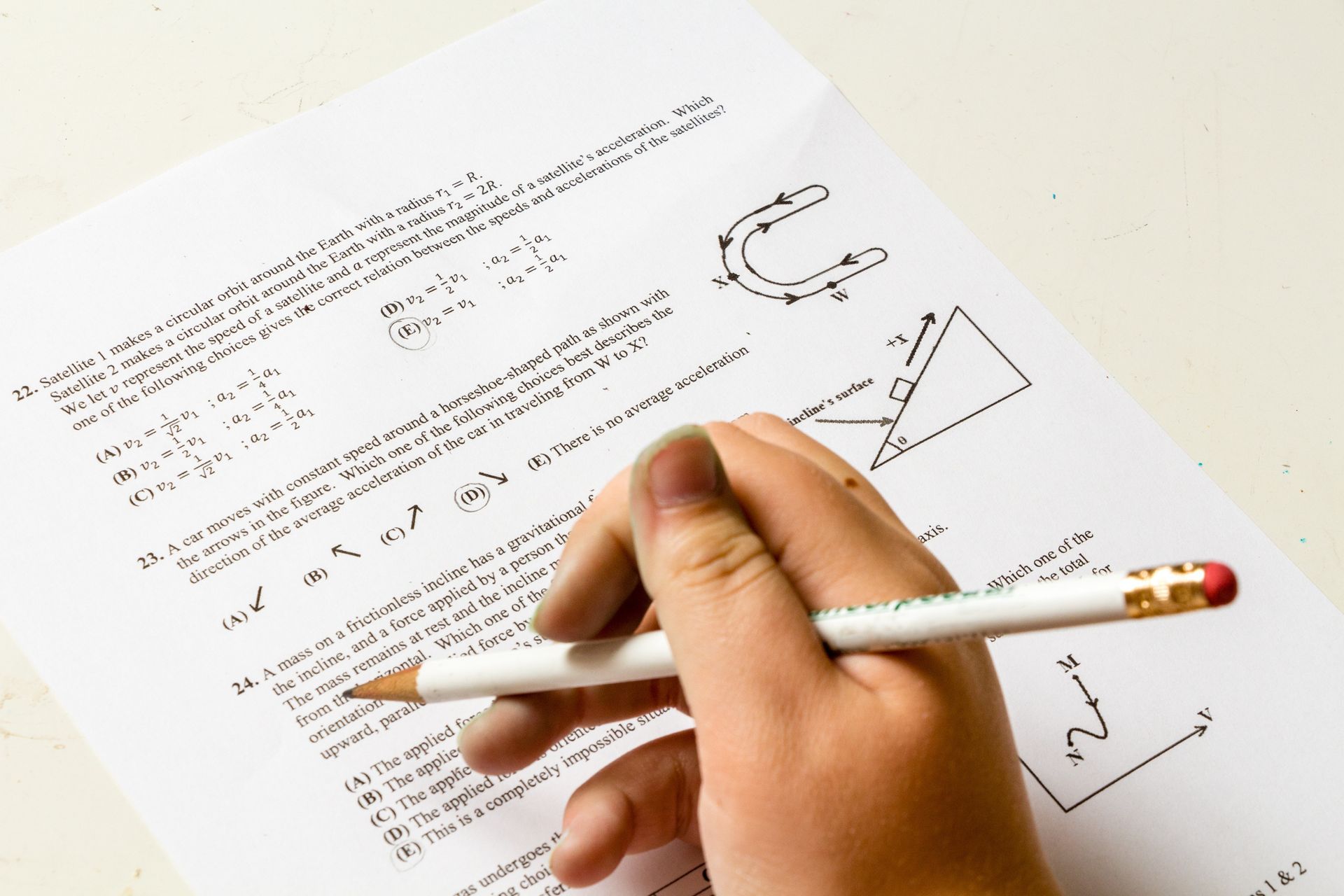
Maths exam tribulations
The question of whether we could use our Sinclair Cambridge calculators in the maths exam had been a point of contention. To address this, five of us who had built these calculators decided to display them on our desks in full view of the exam adjudicator before the papers were handed out.
Surprisingly, no one raised any objections, and upon checking the exam paper, it once again stated that log tables and calculating machines could be used as long as sufficient accuracy could be achieved, the exact same wording as on the mock exam paper.
As the exam began, I took the first 15 minutes to read through all the questions and promptly answered the ones that were simple and straightforward.
I then proceeded to tackle the more challenging questions in order of their value, starting with the highest. However, throughout the entire exam I found that I couldn't use the calculator to answer a single question listed in the paper, every question required much higher maths than could be computed, trig, geometry, algebra, simultaneous equations, identifying geometric shapes, correctly recording logs from the log tables for numbers etc. were the order of the day.
Approximately 10 minutes before the end of the exam, another adjudicator entered the room and upon seeing the calculators, considered ending the exam. However, they ultimately decided to collect the calculators and report the incident.
Later that afternoon, we received an unwelcome invitation to the headmaster's office, Mr. Slack. Unfortunately he was not interested in hearing our explanations regarding the exam paper's guidelines or our consultations with teachers. He resorted to his usual approach, shouting at us, administering canings, and downgrading our exam grades by two levels as a consequence of the breach of exam rules we had committed in his opinion.
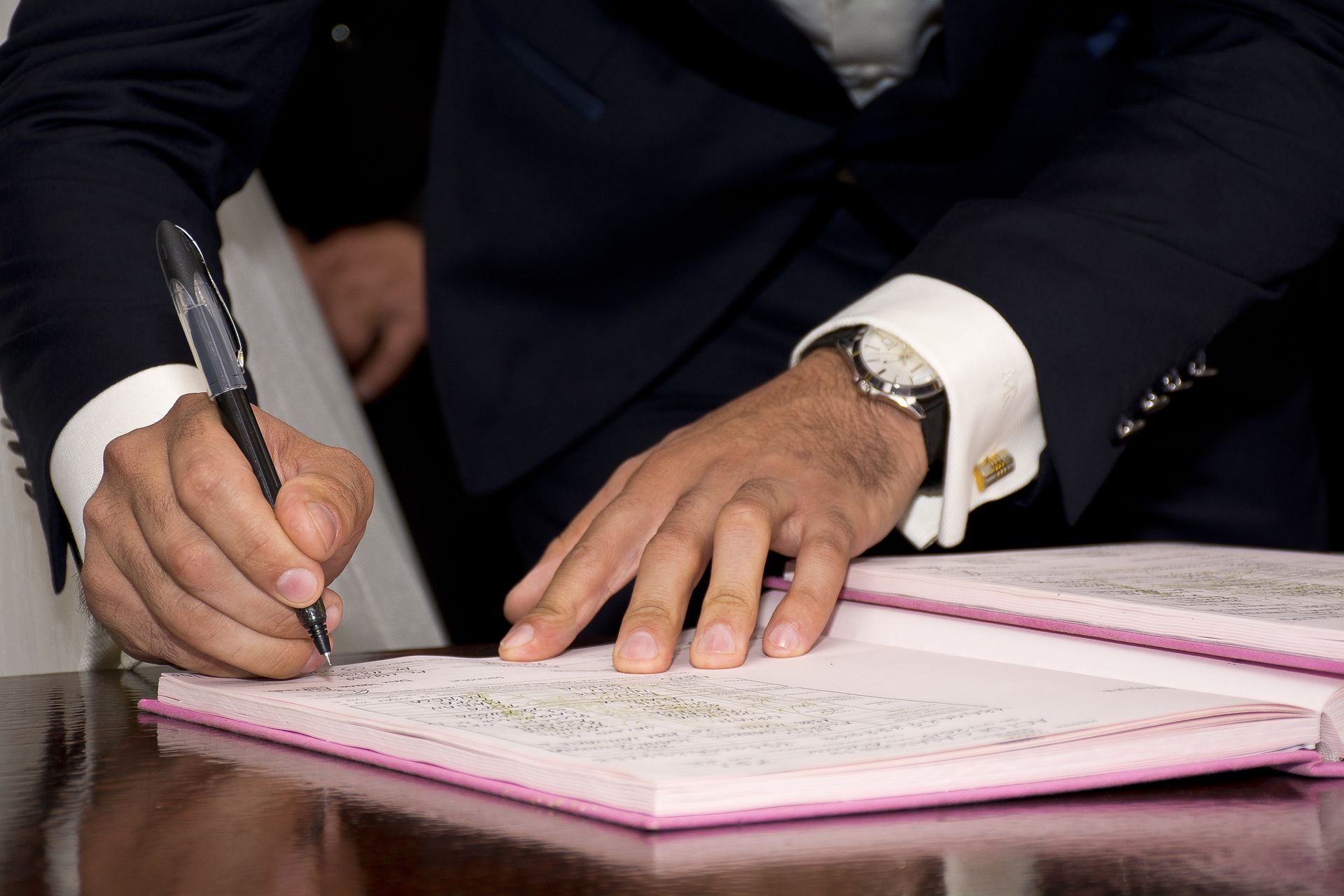
The last few days of school
As the school year drew to a close and the exams were behind us, anticipation for the summer season was palpable. However, tensions were rising as some unruly individuals, the morons, had returned after failing to attend their exams, causing trouble once again.
One unfortunate incident involved a new student being shot with a bow and arrow in the playground, leading to the involvement of both the hospital and the police.
Suddenly, just two days before the official last day of school, we were informed that today would be our final day. We were instructed to report to our respective form rooms and that we would be called to the hall to queue for our exam grades. While waiting in line for mine,
I overheard the headmaster, Mr. Slack, remarking to several of my friends that he believed they didn't deserve the grades they had received. According to him, they hadn't put in enough effort to earn such high level grades. When it was my turn, Mr. Slack continued his streak of sour grapes and declared that I, too, didn't deserve the results I had obtained, six grade 1 certificates. He repeated his belief in a previously expressed opinion that I would never amount to anything, how wrong can one be!
I chose to remain silent, aware that my past actions were not in my favour. The pile of documents in my file, including my deliberately provocative punishment essay from about 18 months earlier where I had written "blah blah blah" for four sides to test if anyone actually read the essays, along with incidents involving fireworks, repairs to the oscilloscope, and laboratory mishaps, seemed to reinforce Mr. Slack's negative perception of me.
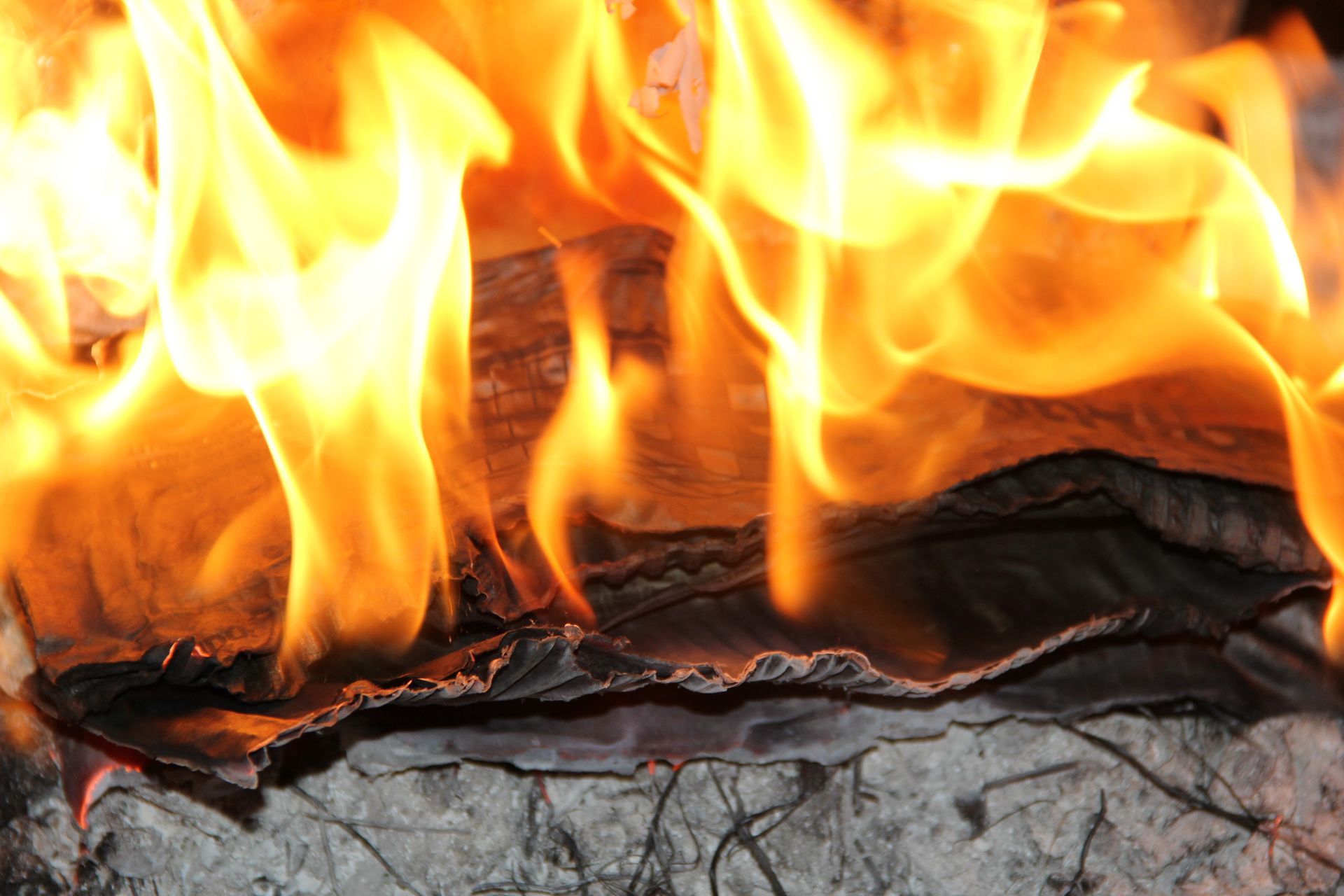
Meanwhile, some of the more unruly students, including a few of my friends, expressed their frustration by hanging their bags and books from the school gate by their ties and setting them on fire. It was an unsettling and chaotic end to an era.
Despite the challenges and unjust judgments, the conclusion of that school year marked the beginning of a new chapter in our lives.

